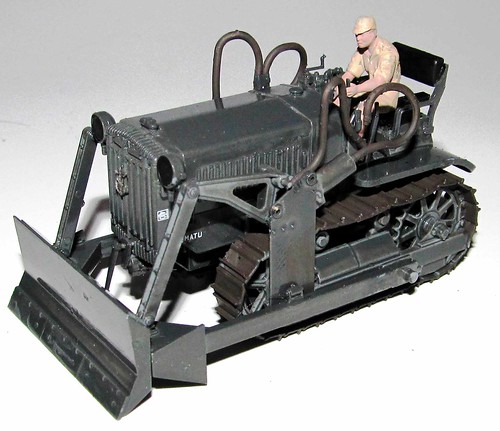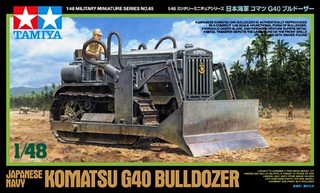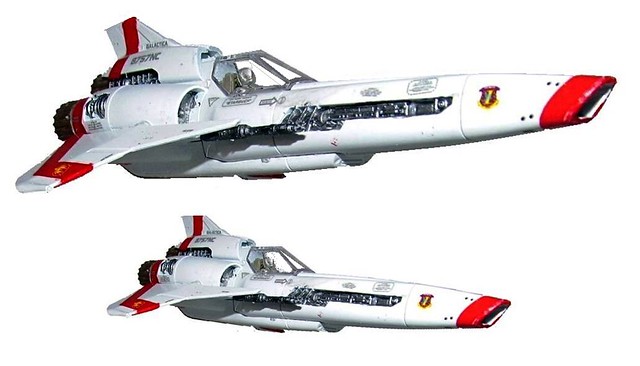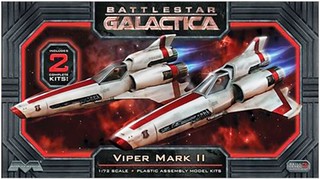Right On Replicas, LLC SnapShot Review 20150706*
2010 Chevy Camaro SS/RS Coupe 1:25 Scale AMT Model Kit #742 Review

Review and Photos by HayLee Purdue 
 The first Camaro made it’s debut in 1966, as a 67 model, to be GM’s answer to Ford’s popular Mustang pony car. First Generation Camaro’s were built from 1967 to 1969, and we’re equipped with V8 engines ranging from 200 to 375hp. Second Generation cars, produced from 1970 to 1981, suffered from new government emissions control and safety regulations, but introduced styling with Camaro until the end of the production run. New styling made Third Generation cars stand out from their predecessors, but these cars, built from 1982 to 1992, also saw base model Camaro having 4cyl engines. 3rd Gen cars still offered V8s, but we’re significantly underpowered compared to earlier models. The Fourth Generation cars, produced from 1993 until the end of production in 2002, saw power increases, and the base models came with GM’s bulletproof 3.8L V6. 4th Gen cars were still being built on the 30 year old F Body platform, and when sales declined the Camaro and sister Firebird were discontinued in 2002. Ford’s retro styled Mustang made a huge sales splash in the 2000s, and the Fifth Generation Camaro began production in 2010. Built on the Holden Zeta platform and featuring modern power plants and features as well as its own retro look, the Camaro is here to stay.
Â
For the Modeler: This review is for AMT’s 2010 Chevy Camaro SS/RS coupe. There are several versions of this kit produced, including a police car. The kit is part of the Showroom Replicas series, and is a  simplified curbside model lacking power train details.  This kit has some snap-fit parts, but some steps require gluing like more advanced models. The model requires painting to match the box art, as most parts are molded in white. The remaining parts are molded in clear (including the taillights) with chrome rims and vinyl tires and seats. This is the first kit that I’ve built with vinyl seats, and they look good and are easy to install. The Camaro has waterside decals instead of press-on stickers, and includes SS stripes in white or black if you choose to use them. Being a simplified kit, most of the Camaro’s underbody components are molded in place on a one-piece chassis plate, which has excellent detailing, including the engine, transmission, and driveshaft. Separate mufflers, tail pipe ends, and exhaust pipes make painting simple and it looks very good. The body looks like an accurate representation of a 2010 Camaro, and does have a removable hood if the advanced modeler wanted to add under hood detail. The finished dimensions are; Length 7.75â€, Width 3.0â€, Height 2.5â€.
This kit has some snap-fit parts, but some steps require gluing like more advanced models. The model requires painting to match the box art, as most parts are molded in white. The remaining parts are molded in clear (including the taillights) with chrome rims and vinyl tires and seats. This is the first kit that I’ve built with vinyl seats, and they look good and are easy to install. The Camaro has waterside decals instead of press-on stickers, and includes SS stripes in white or black if you choose to use them. Being a simplified kit, most of the Camaro’s underbody components are molded in place on a one-piece chassis plate, which has excellent detailing, including the engine, transmission, and driveshaft. Separate mufflers, tail pipe ends, and exhaust pipes make painting simple and it looks very good. The body looks like an accurate representation of a 2010 Camaro, and does have a removable hood if the advanced modeler wanted to add under hood detail. The finished dimensions are; Length 7.75â€, Width 3.0â€, Height 2.5â€.
Overall impressions: This is only my fourth model car, and I found it to be a solid and fun kit to build. I enjoyed the fit and details of the interior components, and the supplied decal for the stereo deck is cool and looks good from outside the car. The rims and tires are excellent, and would look good even on a higher skill level kit. The separate exhaust pieces fit fairy well, and add realism to the chassis plate. The exhaust, like most of the pieces in the kit, had fitment issues that were solved by enlarging the holes and gluing the parts together.
The tires in this kit are directional, and the rear tires are larger than the front tires. The instruction sheet does an excellent job of calling this information out to the modeler. The kit features separate brake rotors, which must be installed in the correct location for the molded-on calipers to be in the necessary place. Again, the instructions provide the necessary guidance. This, unfortunately, is where I had the most difficulty with the model. After gluing on the brake rotors, I couldn’t get the wheels to install with the metal axles. After several attempts (and accidentally breaking the exhaust pipe oops), I gave up and glued the wheels directly to the rotors. While this allowed me to complete the step, it resulted in giving the rims the wrong offset and they stick out past fenders.
The interior builds directly onto the chassis playe, and goes together without a problem. It has beautiful detailing, and the vinyl seats snap into place. A separate headliner is a plus to the kit, and looks far better than more common molded details.
The assembly of the body to the chassis was refreshingly easy, but the rocker panels had fit issues that resulted in gaps that required attention. Curiously, the clear pieces install from the outside of the body, instead of from the inside where adhesive residue can be hidden with less effort. Overall, the clear pieces are thin and fit well. The quarter panel windows on my kit didn’t require clear parts cement, and simply pressed into place. The fit of the windshield and cowling was a bit tricky, and definitely a unique feature, as I haven’t seen it on other car models. I had been forewarned of fit issues with the front and rear fascias, so I opened up the location holes in the body prior to installation. This didn’t completely solve the problem, but looks far more acceptable than when I first test fit the parts.
I painted my Camaro using Testors Diamond Dust spray to be close to the car depicted in the box art. The box art car didn’t have the SS stripes, so I chose not to put them on my model. I also chose not to use the decals for the front and rear Chevy Bowtie insignia, and painted them using Testors gold instead.
I completely underestimated the difficulty of this model, which I feel may have led to some of the fit issues that I encountered. Despite the problems that I had, I enjoyed building this kit, and would recommend it to other modelers, but I wouldn’t recommend it to beginners to the hobby as it isn’t as easy to assemble as a true snap kit.

Right On Replicas, LLC ©2015 All rights reserved. *All registered trademarks are the property of their respective brands. Follow the manufacturer’s safety recommendations for any product mentioned here.






